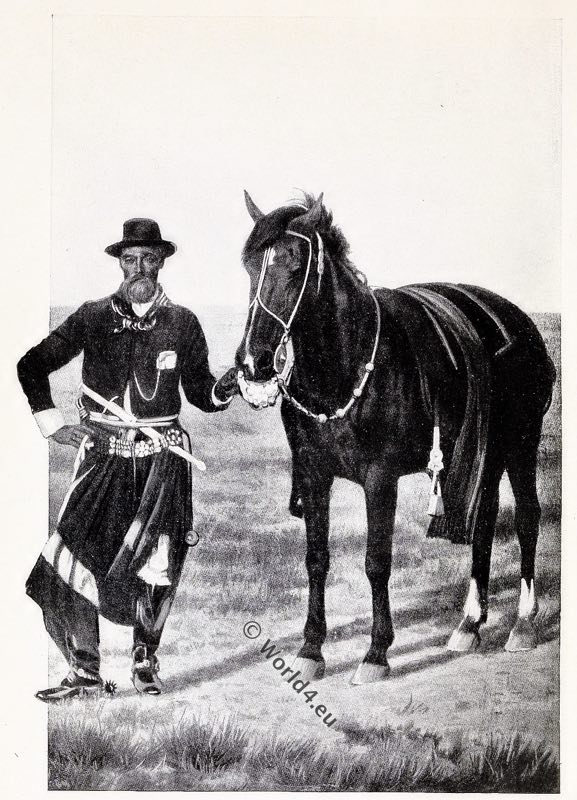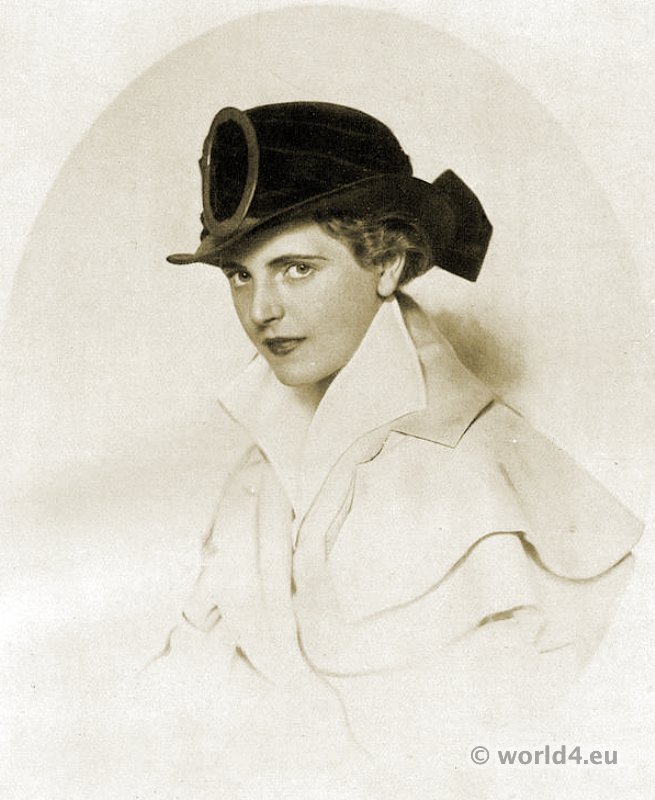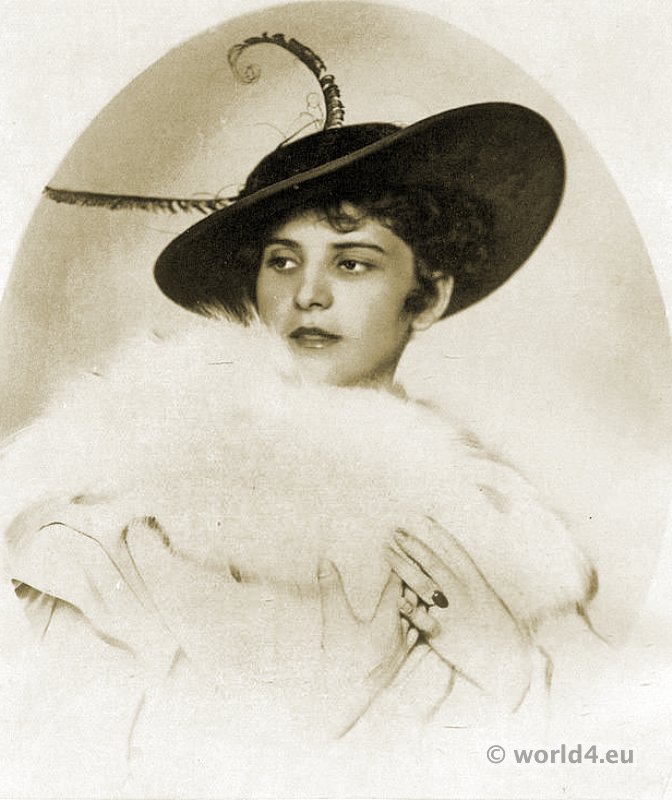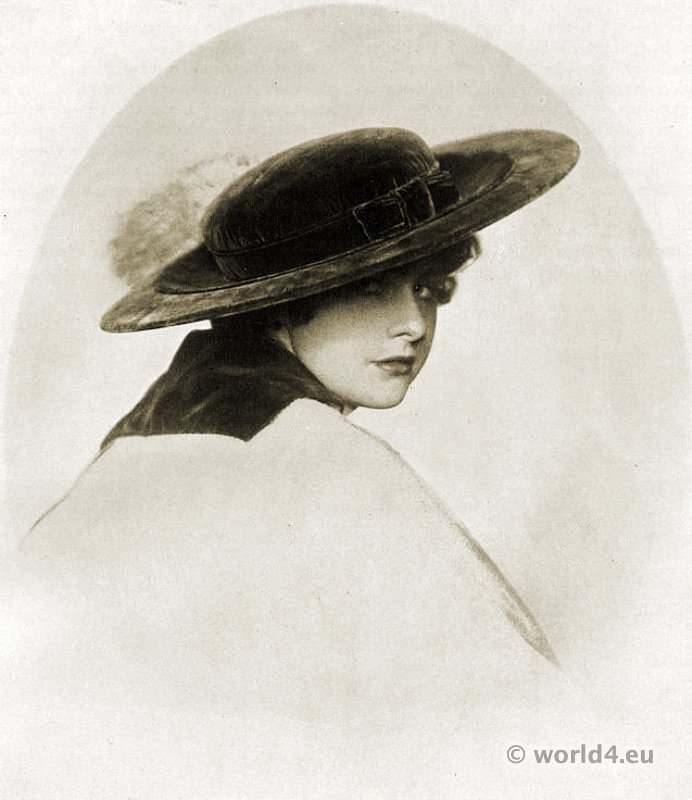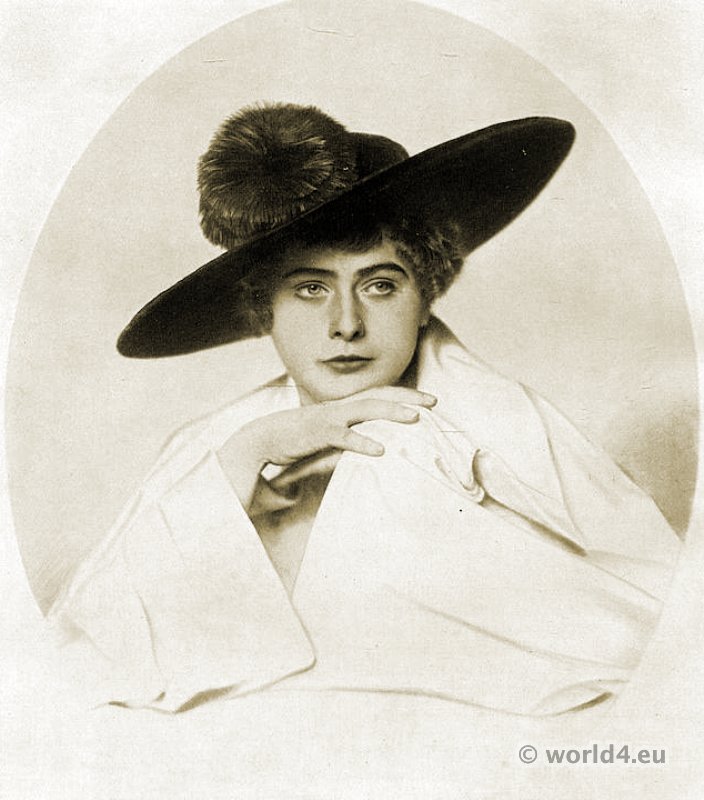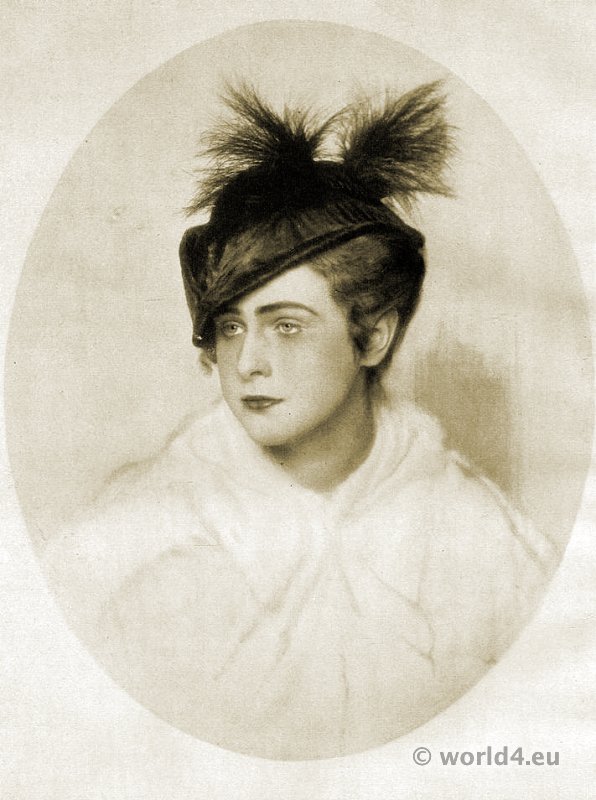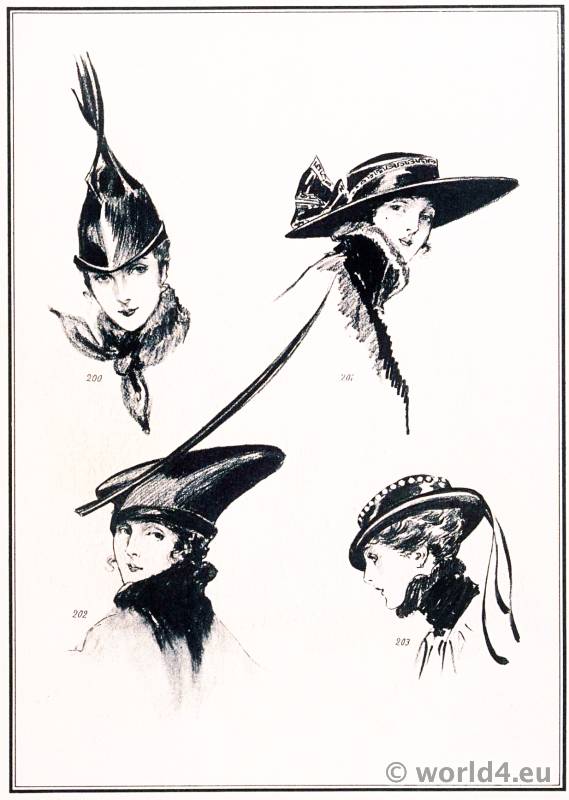A Vanishing Figure. An Argentine Gaucho 1915.
A Gaucho wearing the chiripá, or loose over-trousers, and carrying the bolas around his waist. The boleadora, boleadoras (until the end of the 19th century simply bolas) or laque is a throwing weapon/hunting tool created by the indigenous people of Patagonia and the Pampas; it was later adopted and modified by the gauchos.
Gaucho is the name used to refer to the characteristic inhabitant of the plains and adjacent areas of Argentina, Uruguay, Paraguay, Brazil (Rio Grande del Sur), also in the southern part of Chile (Región de Los Lagos, Región de Aysén and Región de Magallanes), in the southern region of Bolivia throughout the department of Tarija and the Chaco Chuquisaqueño, from the 17th to the mid-19th century. He was identified by his status as a skilled horseman and by his link to the proliferation of cattle in the region, as well as by the economic and cultural activities derived from it, especially the consumption of meat and the use of leather.
In terms of their occupation, the work systems imposed by some landowners after independence gave shape to the particular clientelistic regime of the peón de campo. As for their way of life, they had a pseudo-nomadic lifestyle.
Gaucho women have traditionally been called “china” (from Quechua: girl and, by extension, female), “paisana”, “guaina” (in the northern littoral), “gaucha” and “prenda”.
The figure of the gaucho in Argentine, Paraguayan and Uruguayan cultures, as well as in the region of Rio Grande do Sul (Brazil) and in Chilean Patagonia, is considered a national icon representing tradition and rural customs. Gauchos fought in the wars of independence and civil wars. The so-called gaucho literature was formed around their figure, whose main theme was the denunciation of social injustice, and whose culminating point was the books El gaucho Martín Fierro (1872) and La vuelta de Martín Fierro (1879).
As an inhabitant of the countryside, he is similar to other rural inhabitants on horseback, and above all as a horseman, such as the Chilean huaso, the Mexican charro, the Peruvian chalán, the Ecuadorian chagra, the Colombian-Venezuelan llanero, the American cowboy and the Paraguayan vaquero (the “cowboy” in Paraguay has also often been called gaucho for historical and cultural reasons).
Source: THE REAL ARGENTINE. Notes and Impressions of a Year in the Argentine and Uruguay By J. A. HAMMERTON. NEW YORK DODD, MEAD AND COMPANY 1915.
Discover more from World4 Costume Culture History
Subscribe to get the latest posts sent to your email.

